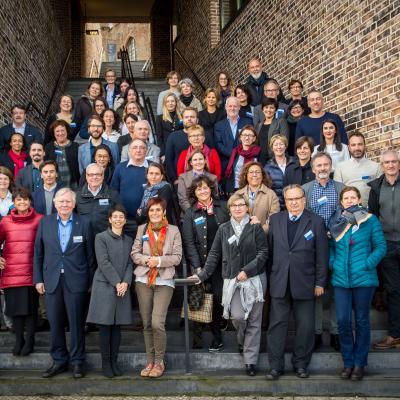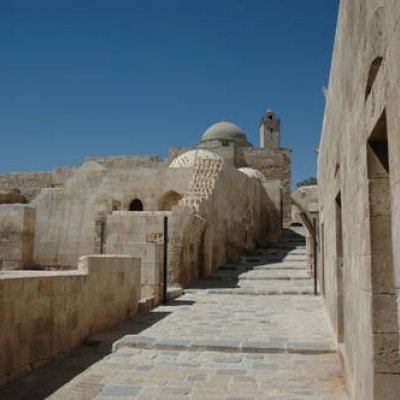Our Contribution
Transnational Cooperations

The history of the World Heritage Convention is a history of international cooperation based on the core principle of shared responsibility and international solidarity. Transboundary cooperation is particularly important. It represents a vital part of the World Heritage Convention and reflects the core values of UNESCO as an international organisation whose purpose is to contribute to peace and security by promoting cooperation among nations. Transboundary World Heritage sites are therefore, without doubt, the clearest manifestation of this idea and can be considered pioneers in actively implementing direct cooperation between states on all management levels in the framework of the World Heritage Convention.
Transboundary cooperation is an enriching experience of interculturalism and dialogue between peoples. It offers the unique opportunity to get to know others, reflect on one's own assumptions and find effective solutions to global challenges. In the light of current challenges related to globalization, migration and integration, World Heritage sites offer the unique opportunity to serve as meeting and learning places for people from all over the world.
In Germany, a variety of World Heritage sites are part of transboundary sites:
Muskauer Park / Park Mużakowski (inscribed 2004)
Frontiers of the Roman Empire (inscribed 1987, extended in 2005 and 2008)
Wadden Sea (inscribed 2009, extended in 2014)
Ancient and Primeval Beech Forests of the Carpathians and Other Regions of Europe (2007, extended in 2011 and 2017)
Prehistoric Pile Dwellings around the Alps (2011)
The Architectural Work of Le Corbusier, an Outstanding Contribution of the Modern Movement (2016)

Shared challenges and benefits
Transnational World Heritage sites present a variety of challenges in regard to their nomination and management and hence require close cooperation between states in order to achieve a joint consensus. The overall management system needs to be harmonised for the states' various legal systems and has to overcome language barriers and cultural differences.
At the same time, transboundary sites offer enormous opportunities to improve protection measures and develop communication strategies to transmit the common Outstanding Universal Value of the overall site. It is important for communication to take into account all components of the World Heritage site: together, they reflect its Outstanding Universal Value as a whole.
German-Polish cooperation
One unique example of transboundary cooperation is the joint work by Poland and Germany to protect the transboundary World Heritage site Muskauer Park / Park Mużakowski. Inscribed in 2004, the park is jointly managed by a board of German and Polish representatives based on a cooperation agreement, and includes a joint youth programme for cross-boundary learning. It is one of only few transboundary World Heritage sites which can be visited as a whole without any border controls.
While cooperation between the two states started out as a mere focus on protecting the site, it has since expanded more and more into other fields of work and now affects tourism and economic development. Considering the events of the Second World War and the turbulent common history of Poland and Germany, such strong and fruitful cooperation should not be taken for granted and illustrates the importance of World Heritage sites as catalysts for stronger bi- and multilateral cooperation.
Activities of the German Commission for UNESCO
In order to share practical experiences and exchange valuable knowledge from international cooperation with other World Heritage sites, the German Commission for UNESCO, in cooperation with the Federal Foreign Office, the Hessian Ministry of the Environment and the Common Wadden Sea Secretariat (CWSS), organized a conference on “Perspectives of Transboundary Cooperation in World Heritage – Sharing Experiences in and around Germany” on 12 and 13 December 2016. The main objective of the conference was to identify appropriate parameters for successful cooperation and develop recommendations for national and international stakeholders for further action on shared challenges. In this context, a special focus was on the topics of cooperation structures, financing and legal protection, as well as teaching and learning in a transboundary context.
In 2017 a conference report was published presenting the most important aspects of the various presentations and discussions by representatives of the six German World Heritage sites which are part of a broader transboundary site.



